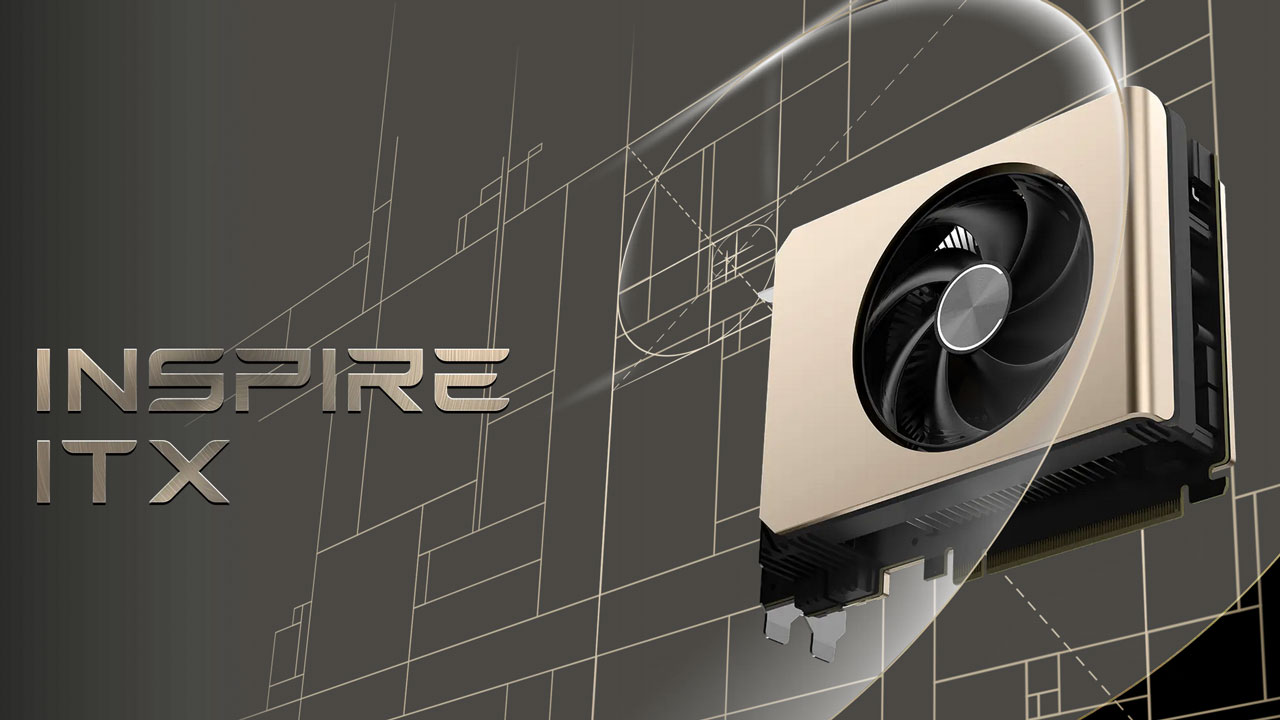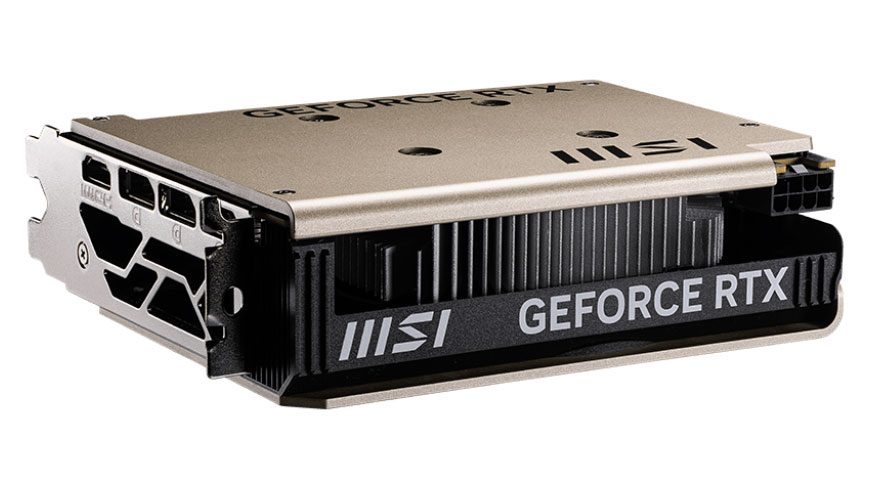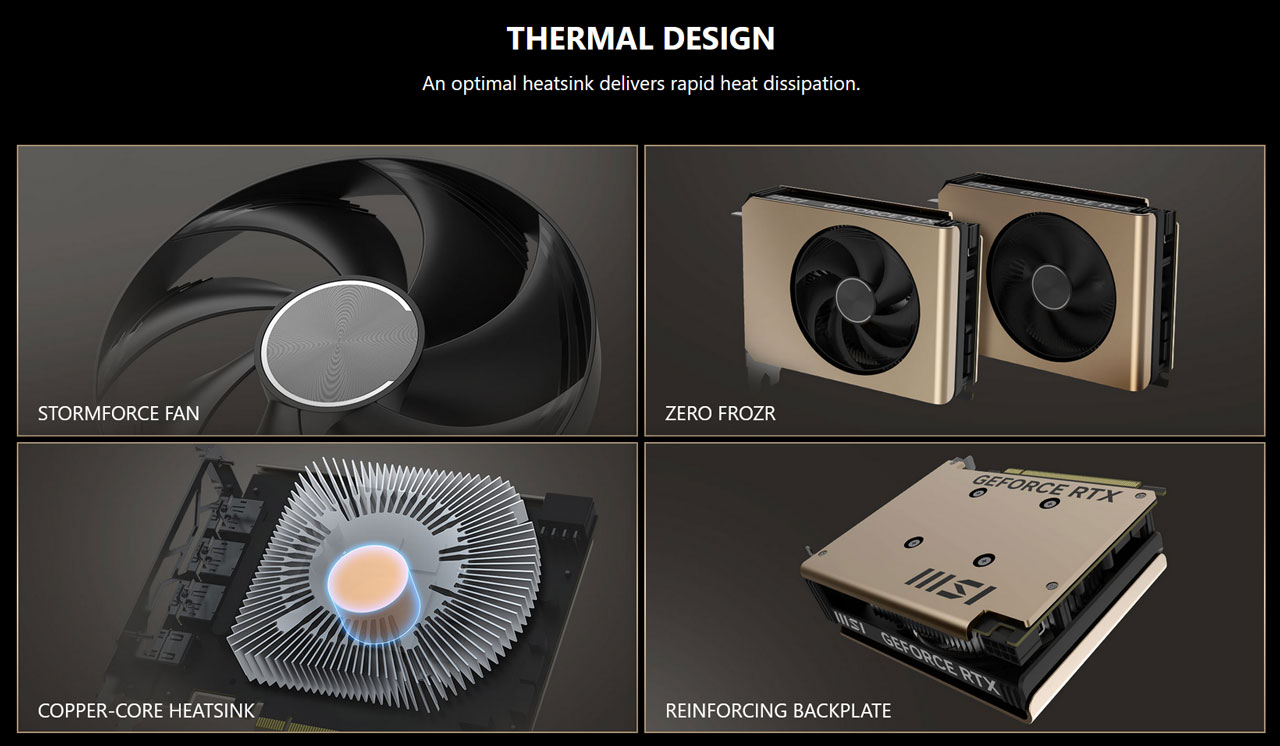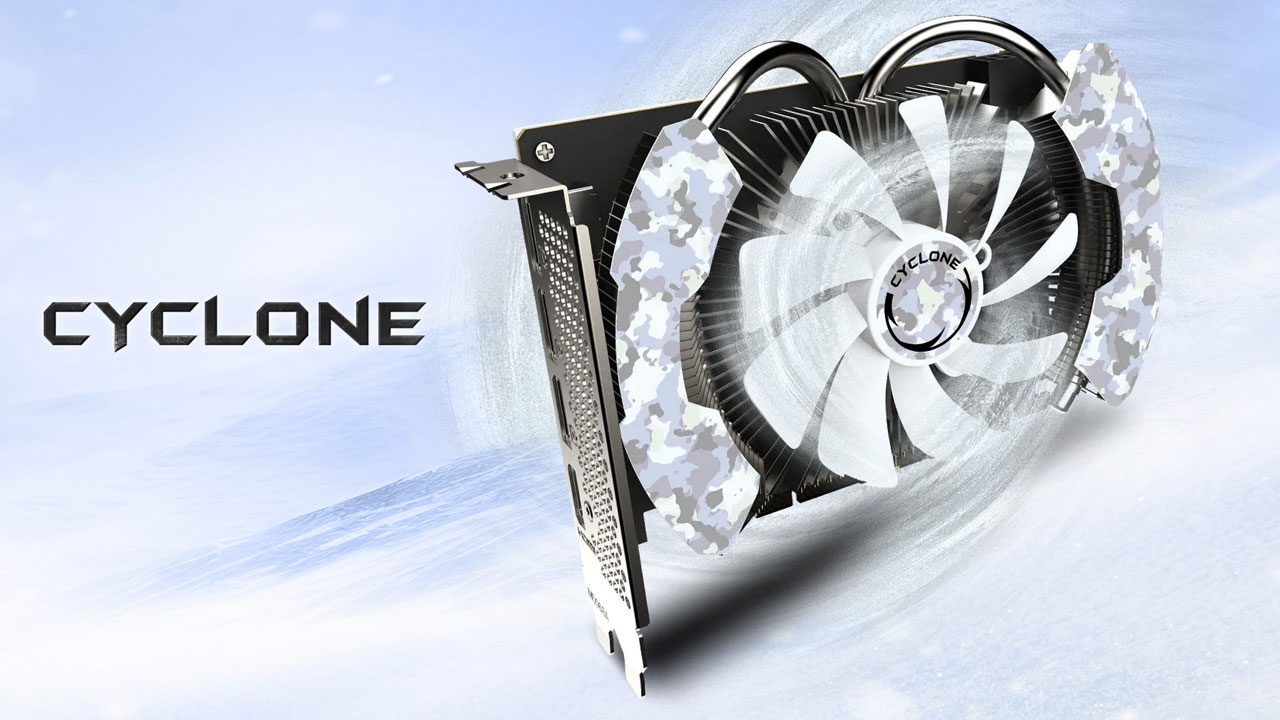MSI unveils one of the tiniest RTX 5060 GPUs yet — Single-fan Inspire RTX model measures just 145 x 120 x 45mm
This single-fan card is admirably short, but still takes two slots.

MSI has quietly introduced one of the tiniest RTX 5060 graphics cards yet. The new MSI GeForce RTX 5060 8G Inspire ITX measures just 145 x 120 x 45mm. Despite this cute single-fan wonder’s admirably short stature, it will still take up two slots in your case. Let’s look and see what, if any, other compromises MSI has made.
We published a roundup of all the new RTX 5060 (and RTX 5060 Ti) graphics cards back in April. All the usual brands were covered, and we saw MSI roll out designs of this 145W TGP graphics card ranging from hulking triple-fan cards, through modest dual-spinner designs, to the retro cool shroud-less Cyclone models. We only saw dual-fan Inspire series models at that time.



Looking at the specs of the new MSI Inspire card, we see that the Nvidia partner has released both a standard and an OC model of this ITX-friendly product. Of course, the key specs such as the GPU cores, memory quota, type, and bus width remain the same as every other RTX 5060 around, but we were curious to see if the tiny form factor has any impact on performance specs like max GPU clocks. You can see for yourself in the abridged table below.
Tom's Hardware | Nvidia reference | MSI Inspire ITX | MSI Inspire ITX OC | MSI Gaming Trio OC |
|---|---|---|---|---|
GPU cores | 3,840 | 3,840 | 3,840 | 3,840 |
Boost clocks | 2.50 GHz | 2.497 GHz | 2.527 GHz | 2.625 GHz |
Memory | 8GB GDDR7, 128-bit | 8GB GDDR7, 128-bit | 8GB GDDR7, 128-bit | 8GB GDDR7, 128-bit |
Power | 145W, 1x 8-pin | 145W, 1x 8-pin | 145W, 1x 8-pin | 155W, 1x 8-pin |
Size | NA | 145 x 120 x 45mm | 145 x 120 x 45mm | 300 x 125 x 44mm |
Smaller than the MSI Cyclone, features the same GPU clocks
We also noticed that MSI’s other single-fan RTX 5060, the aforementioned Cyclone card, had the same GPU clocks in its regular / OC editions as the Inspire models. While the Cyclone is still compact, at 161 x 125 x 42mm, it is a little taller and longer in the slot. There’s not a lot in it, though, and the retro appeal of the Cyclone might sway some compact PC builders.

Noise and temperature profiling requires third-party assessment
What the official specs don’t show are some pretty important things like the noise level users will experience when these tiny graphics cards are idling or put under duress.
Looking at the numbers, MSI’s biggest and best overclocked model, with a 10W higher TGP, will likely be barely any faster than the tiniest cards. The max clocks are less than 5% better. However, this triple spinner MSI Gaming OC model should be a lot quieter. It is also likely to spin up less aggressively as the GPU won’t get so toasty, so quickly.
Follow Tom's Hardware on Google News to get our up-to-date news, analysis, and reviews in your feeds. Make sure to click the Follow button.
Get Tom's Hardware's best news and in-depth reviews, straight to your inbox.

Mark Tyson is a news editor at Tom's Hardware. He enjoys covering the full breadth of PC tech; from business and semiconductor design to products approaching the edge of reason.
-
palladin9479 Reply
Market data says otherwise.S58_is_the_goat said:8gb... Useless card then. Cute though.
This'll be good for OEM and SFF designs. The current 4060 LP model is still too big for many applications. -
Eximo Still has its uses outside of gaming as well. Pretty decent boost to a video editing desktop or what have you.Reply -
S58_is_the_goat Reply
Vram usage of current games says otherwise, and I'm not talking about esport games.palladin9479 said:Market data says otherwise. -
Eximo But that is what a significant majority of gamers actually play, so market data again. The only real issue is the pricing.Reply -
Roland Of Gilead For the vast majority of games 8gb at 1080p is sufficient. Yes, some AAA games will punish 8gb vram cards, but not everyone plays the most intense titles anyway. Defo a use for this, and that includes decent gaming performance.Reply -
Eximo When I was fist building PCs and on tight budgets, it was enough for the game to be playable. Sacrificing settings was very normal. But the games most played were older multiplayer titles. Your Unreals and Quakes and CS1.Reply
I think the first time I ran into issues that I can remember clearly was people wanting to play the original Day of Defeat, and half the people in the room couldn't get more than 15 FPS. -
palladin9479 Reply
Only if you live in fantasy land.S58_is_the_goat said:Vram usage of current games says otherwise, and I'm not talking about esport games.
Thankfully Valve collects this info for us so we don't need to rely on tech YT. -
palladin9479 Reply
It's not even AAA games, it's AAA games on ultra.Roland Of Gilead said:For the vast majority of games 8gb at 1080p is sufficient. Yes, some AAA games will punish 8gb vram cards, but not everyone plays the most intense titles anyway. Defo a use for this, and that includes decent gaming performance. -
Roland Of Gilead Reply
True! And to boot, there's sometimes barely a noticeable difference between 'Ultra' and medium or high settings for a lot of games. So choosing lets say, high for arguments sake obviously gives a boost in FPS, and often fits nicely within the 8gb buffer.palladin9479 said:It's not even AAA games, it's AAA games on ultra.
It's bugs me a little that there is a lot of hype and band wagoning going on in relation to this. Defo a hot topic though.